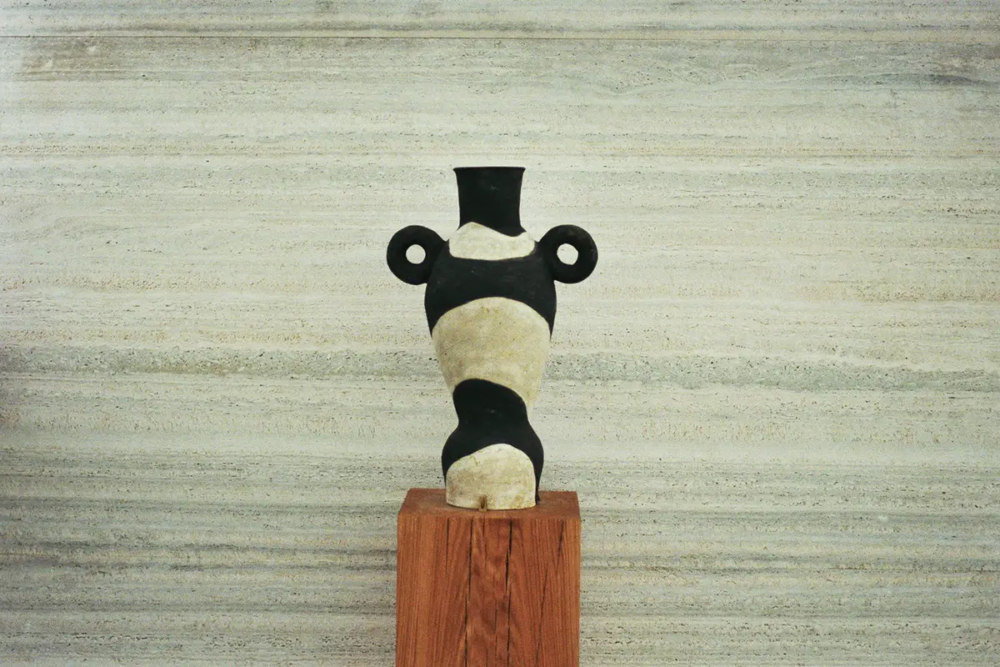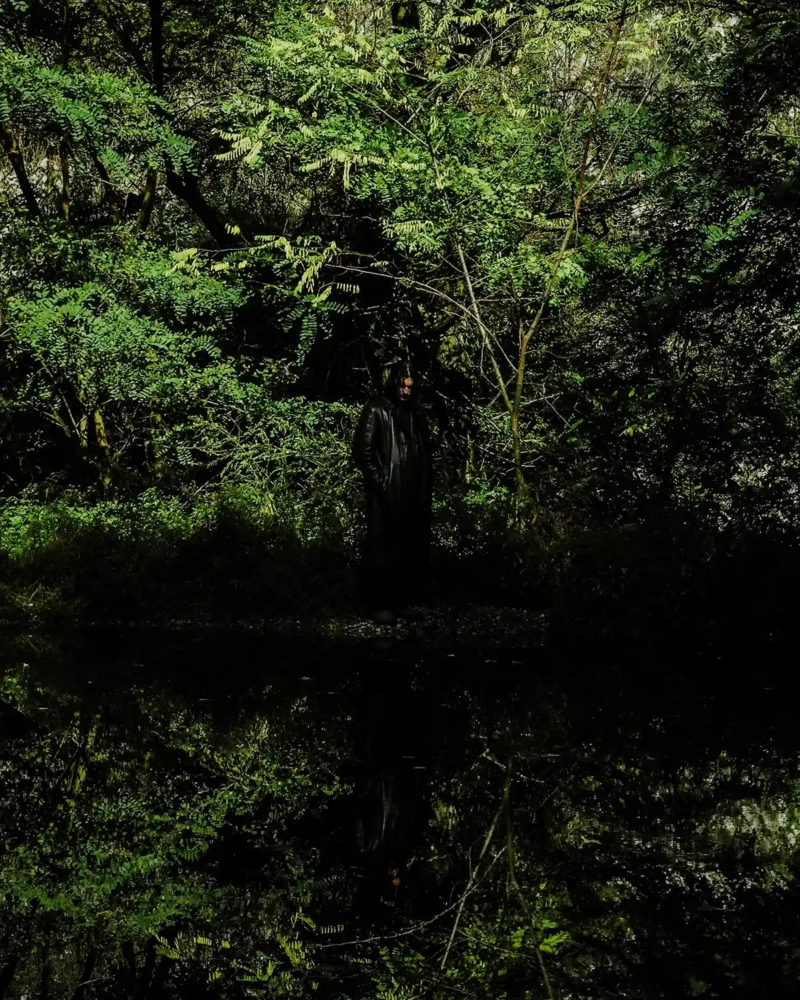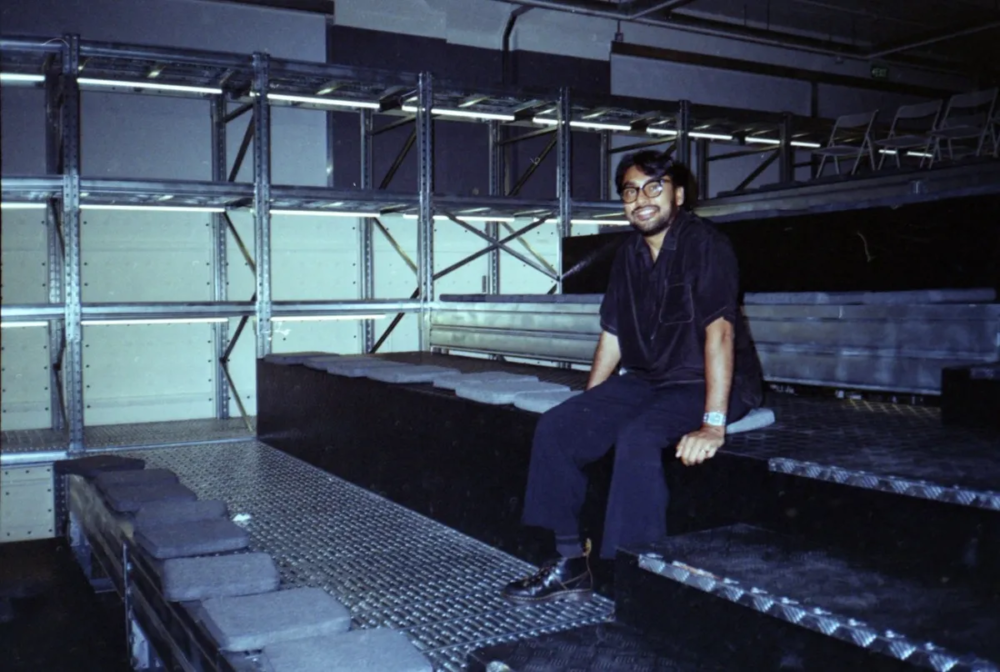
Fashion Fall 2025: creativity must be constrained
If creativity cannot expand on the surface, it descends into the depths. Limits and constraints are needed, to improve the proceed with a responsible design: analysis, examples, chronicles, and references
Creativity Constrained: Imposing limits on your creativity
Someone raises an eyebrow: Imposing limits on your creativity is the opposite of what you would like to hear. Be constrained. The opposite of what you expect a mentor or teacher or simply an employer to tell you: only the best of these will be able to explain to you that these are prospects of your every ability. The fence is given – and today it must be respected. You cannot use what is outside this fence – that is, almost everything: the bright, garish colors, and so the prints; the nylon threads that all hold; the polyurethane padding; the resins, the plastics; the elastic threads that all allow you to wear and hold. What is left inside the enclosure, available in your hands, to express your creativity? Nothing?
Something remains: the master among the many who speak will be able to explain to you that creativity does not expand on the surface but penetrates down deep, elaborates, digs deep into every detail. Your skill lies in creating some new thing using what little you have. Creativity is never a matter of availability, resources and thought. The more creativity is constrained by rigor, the more creativity reacts in splendor. When creativity is constrained by rigor, it becomes skill. It is said that Flaubert squirmed all night to write three lines.
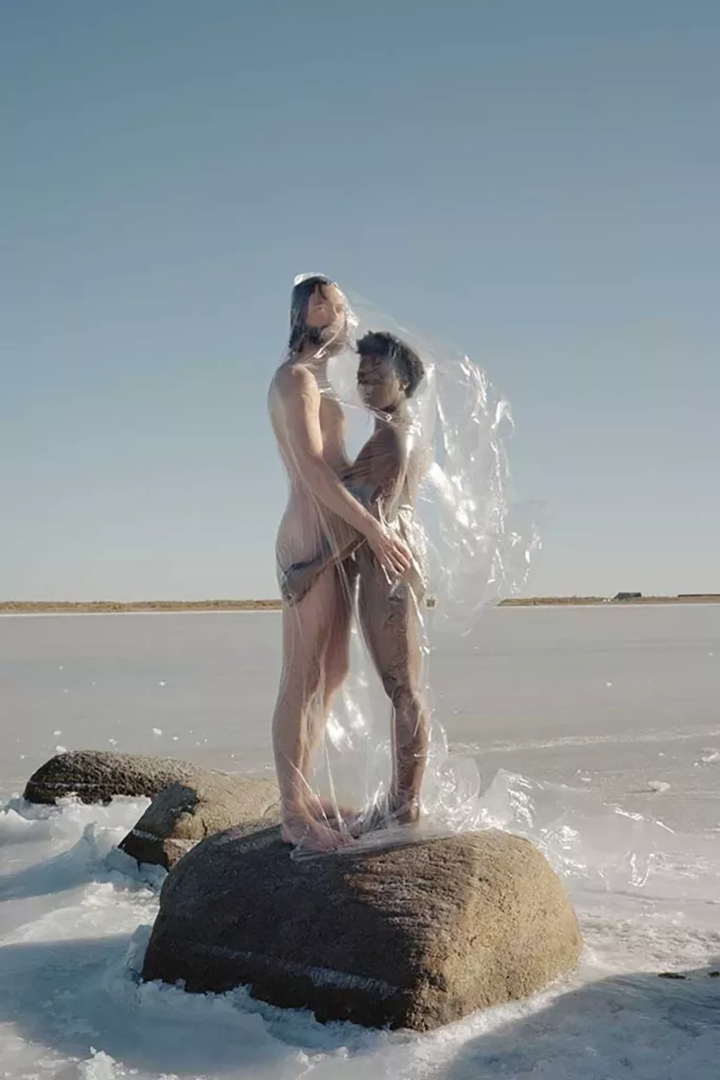
Microplastics: to design without synthetic fibers – only natural fibers
The news has been amplified by national rotogravures: microplastics have been found in atherosclerotic plaques. An Italian study from the University of Campania, in collaboration with the Istituto dei Tumori in Milan and Harvard Medical School in Boston, indicated that the risk of heart attack was doubled in the presence of plaques polluted with microplastics. Microplastics have been detected in the placenta and breast milk, liver, heart tissue, and sperm. The top three sources of microplastic pollution are tires, cosmetics, and textiles. Polyethylene and PVC are used everywhere. In spite of all this, people still prefer sequined clothes.
The starting point must be updated: a designer who wants to be contemporary no longer starts with his design. The designer who knows what he is doing today starts by reasoning about the impact dress will have on manufacturing. From that reasoning, discussing with the supply chain, he will begin by choosing natural fibers, before other options. In order to continue using synthetic, he will not mix it with wool or leather. It will not mix materials with different textures, raising the risk of seams holding (whether cotton or nylon).
Useless are the yawning out of boredom that I move you reading my lines, just as useless are the brightly colored prints you like to collect on creative mood-boards. As of Oct. 17, 2023, the European Commission Regulation known as the Fight against Microplastics is in effect. This limits their use: in cosmetics, scrubs and makeup; in textiles, limiting glitter. In 2024, a contemporary designer will hopefully know how to stop using glitter.
Who are Prada’s customers today?
Do Prada women, the original ones, still exist? The clients who understand the daring, the irony of ugliness, the awkwardness that becomes carelessness: the fast-paced walk, half heel, high pelvis, sweater at the waist – and the skirt below the knee, with the hemline high. Are there still women who are like this, or are we left with only girls who imitate what they cannot understand? Girls who belittle both the Prada uniform, the Milan it represents, and themselves.
In the context of a Prada show it all makes sense – but do these women exist in the real world? This contradiction now seems to be able to proceed, or perhaps endure – but will it continue? How long? The point remains at the origin: if you remove the foundation, will the building still stand? The Milanese, middle-class lady to whom Ms. Prada refers, where has she been?
Ms. Prada reminds all the other responsive bourgeois and Milanese that every misfortune can be laughed at – and discussed with a guy from Belgium. The intellectual irony. Cini Boeri could have answered her in kind – as well as Giulia Maria Crespi, Gae Aulenti or the Countess of Monza. Today among the ranks, approaching to find the numbered seat, one notices boredly those pretty ones named Chiara, always too much make-up and always with too many sequins on – along with the journalist who, no matter how hard she tries, will never be able to write it.
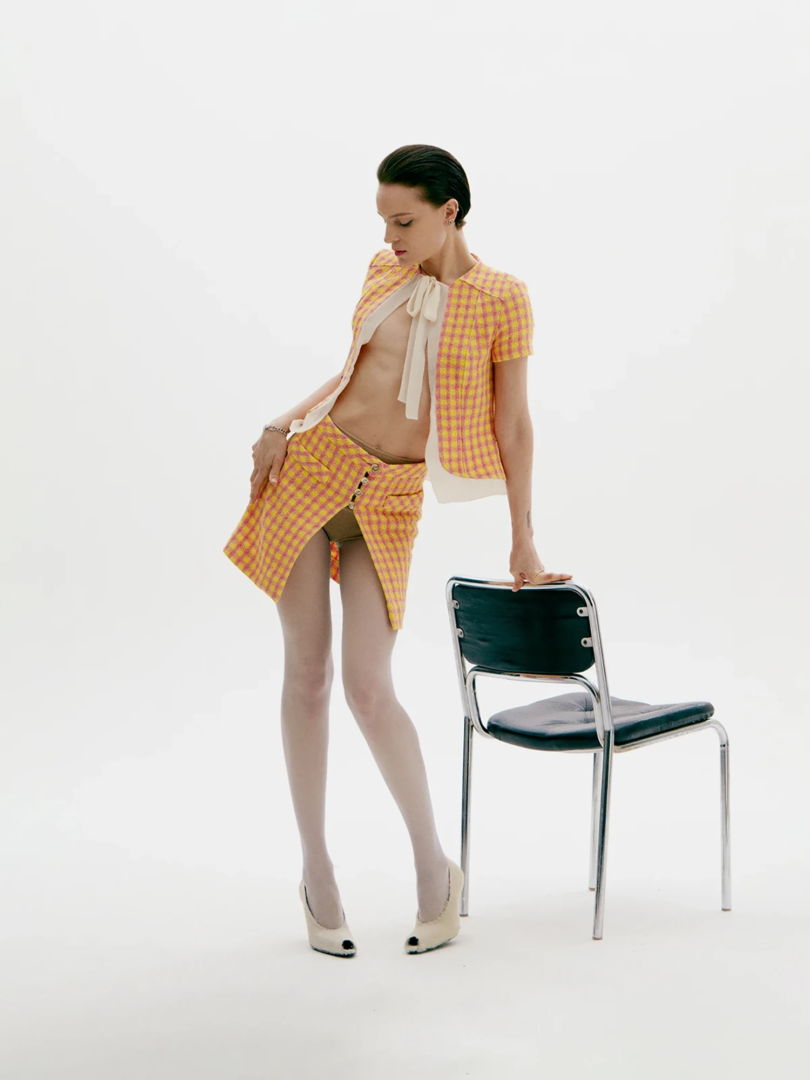
Fashion, you must be obsessed
The fashion industry is obsessed with Prada. True, there is an even more dramatic obsession, than this one for Prada, that the industry suffers from – the obsession with Hedi Slimane. Compared to Prada, Hedi Slimane is unapproachable, detached and indifferent – the obsession remains silent, intimate, reserved. The fashion industry-not fashion per se-is a community of obsessed people. Those who succeed in this industry are obsessed. Worse: today we don’t’ know anymore where Hedi is.
By fashion industry we do not just mean the community of those who make and sell clothes – we mean a system that produces graphics, photography, that subsidizes art and cultural institutions, that catalyzes students’ endeavors everywhere. The question is upstream – is the fashion industry intellectually adept at such obsessions?
Fashion and Sustainability – no Interest
It’s a given: fashion is not interested in sustainability. Let’s move beyond that. Let’s look for creativity—yes, with polyurethanes, elastics, and plastics—but let’s seek strong creativity, a bold design, an unprecedented idea. Something that influences everything else, as fashion is meant to do. This is not resignation but reaction: creativity has the power to find solutions we cannot yet imagine. Creativity is what we do not yet anticipate.Creativity can be found at Duran Lantink. It has been widely discussed. Clothes detach from the body, inventing volumes, finding irony and nonchalance, telling a sculptural story. The statement remains – there is no fixed standard of beauty, not anymore, in fashion. Aesthetic norms should not—should never have been—standardized. Ugliness and beauty are not concepts that today’s fashion seeks to convey—something previous generations and corporate managers must come to terms with.
One can debate the relationship between diversity and uniqueness: are you different from others, or are you simply at ease in your own uniqueness? Are different and unique synonyms? Girls with masculine pectorals and breasts that move on male legs. Unwearable jeans, yet almost painterly. The editorial value is already embedded in the product—no need for a photographer, no need for the editorial context of a magazine. With a dress like this, any photo, even one taken by your four-years-old child, becomes viral.
Is it all reduced to this? At least people are talking about it. A presentation with little financial backing—raising the question of how such a project is funded. How much can it sell—to buyers, to end customers? A fashion show in an office, with rough details. Free, independent—at least for now. Are PR efforts enough to grow a brand into a business? Or is it just about creating enough brand awareness to attract a financial group. A financial group that will acquire the package and provide a salary to the creative director – and that’s it.
Is the PR work behind Duran Lantink well thought out, or is it just another instance of fashion industry frigidity—self-indulgent and, of course, sterile? Does fashion entrepreneurship still exist, or has fashion become just a game of who can secure the investor first to shoulder the problem?
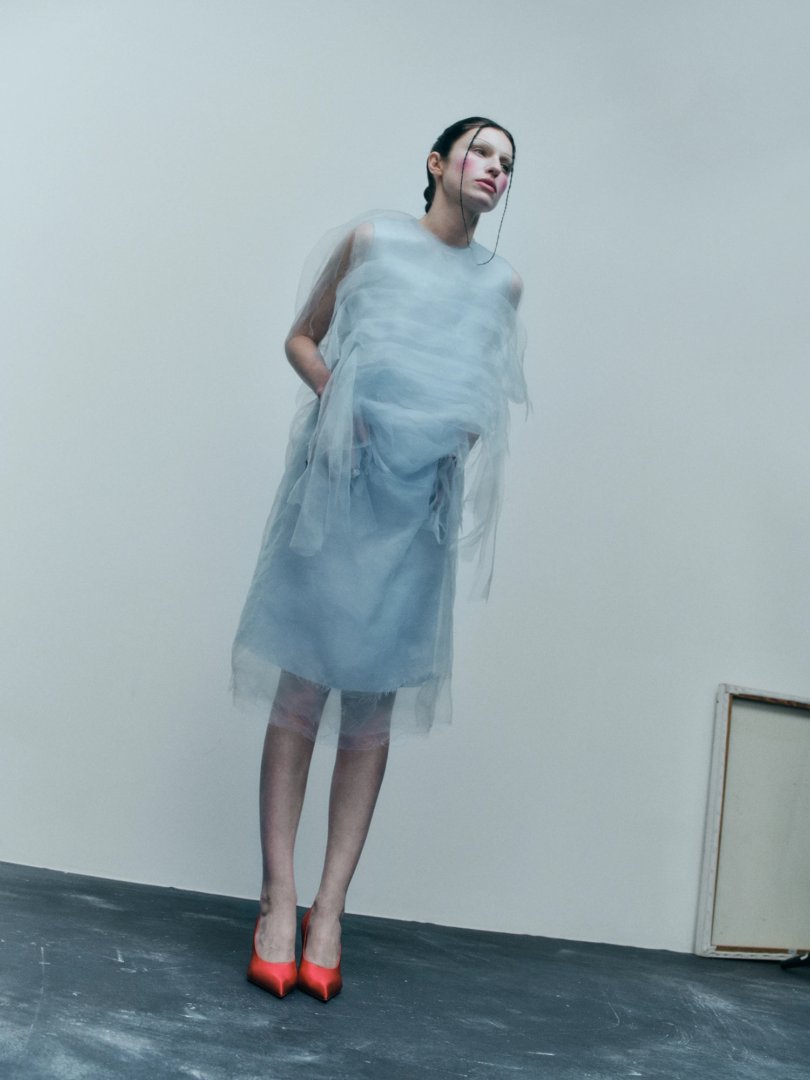
Hyper consumerism, Anna Wintour, and Trump – same Attitude, same Age
Much of what is seen in Paris is the development of commercial brands—the realm of Anna Wintour. A woman who once exuded a sense of power and who today stands as the ultimate icon of American consumerism. Professionally, Anna Wintour is the symbolic synthesis of every reason behind the crisis that fashion is currently facing.
The reputation problem that fashion is suffering from: a system revolving around a contest of attitude and frivolous coolness; a system where public relations take precedence over substance; a system that continues to evaluate everything based on follower counts on Meta. A system that is the natural expression of an era governed by Trump and, indeed, by Anna Wintour. More and more, Trump and Wintour seem alike. Different in their fields—one talks about war and oil while humming Drill, baby, drill; the other talks about plastic, colors, and parties—but their attitude is similar, just like their age.
The three Parisian houses: Hermès, Louis Vuitton, Chanel
Fashion is going through a moment of crisis, potentially more dramatic than recent ones. On the one hand, customers’ desire is shifting toward experiences rather than possessions – travel and well-being, rather than clothing and accessories. On the other hand, the reputation of the luxury sector is collapsing under accusations of complicity in consumerism that every generation identifies as the worst evil. All this is happening despite the fact that it’s clear and obvious – for economic analysts and scholars – that the solution is likely sustainability. Yes, sustainability: again, that notion that too many people continue, more or less openly, to dismiss on the pretext that it is dull.
As a reaction to crises and apathy, the three great French houses continue to drive a growing economy. Three contemporary powers on stage in Paris, early March. Hermès, Louis Vuitton, Chanel. Three fashion shows that cannot be reviewed solely by considering the creativity behind their designs. Three shows that must be examined through the lens of the economic and communicative power. Financial giants: some see this as a limitation, a commercial burden that stifles creativity. Others feel nostalgic, longing for the days of beautiful women and beautiful dresses. Still others find in these levels of complexity a new reason to keep pondering what the three great houses present each season to the public and to the market.
Hermès, Louis Vuitton, Chanel. The highest in revenue, the strongest commercially, the foremost in patronage. The top in branding operations. No, it’s not about fashion – it’s about Paris, about France – these three houses are French emblems, perhaps monuments. Europe sells craftsmanship, America sells digital services. Whatever we do—watch TV, shop for groceries, take a taxi, anything else—we do it today through an American app. Not only that: European financial funds buy shares on the American stock market; Europe is America’s largest foreign investor. In return, Europe exports and creates manufacturing, luxury, dreams, quality of life – can we use the word culture? Europe is culture, yet we’re not aware of it. Hermès, Louis Vuitton, and Chanel: the top French brands with revenues in the billions of euros. French-owned.
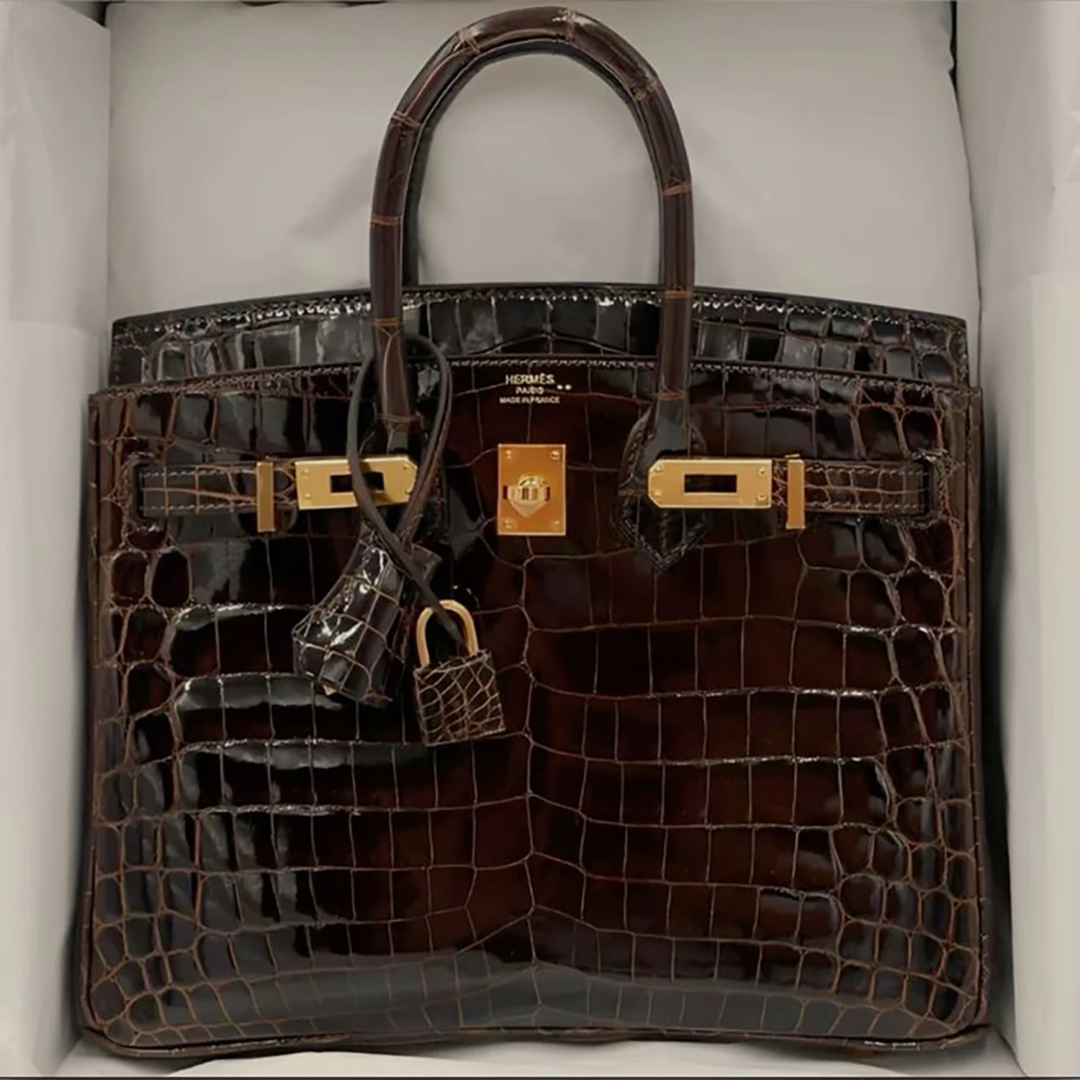
Hermès, the earth and the leather, the 2024 revenue
Hermès finds its identity in a dark earthen color. A nocturnal brown blended with black. Fertile, wet, worked earth, moist. Circular mud walls rise on inclined planes. The black-brown color finds light and reflection: it is leather. A nod to the equestrian element, the knot, the string. There is nothing more complicated than simplicity – Hermès has found its own code for fashion – if fashion is indeed fashion, rather than style.
Hermès’ production is located in France: there are 23 artisan manufacturing plants throughout the country. Bringing everything together in a single production center would make sense from an industrial efficiency and rationality standpoint – but the commitment to maintaining local districts and regional traditions is proof of the house’s solid long-term strategy.
In February, Hermès released its financial data for 2024: total revenue exceeded 15 billion euros, up 15% over the previous year; net profit at 4.6 billion euros. All markets positive. A workforce of over 25,000 employees, with 2,300 hired in 2024. A bonus of 4,500 euros at the start of 2025 was confirmed for all employees. Notably, there is a strategy to reduce rather than increase retail locations: stores have dropped below 300 addresses worldwide.
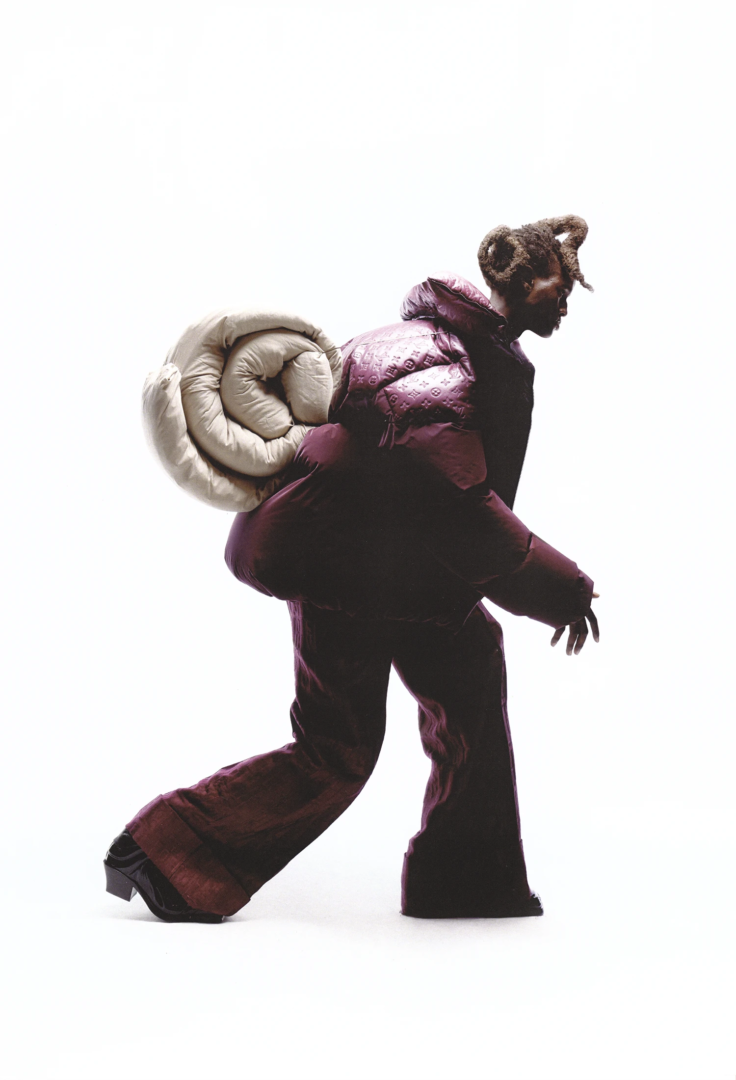
Louis Vuitton and the Arnault family; Nicolas Ghesquière and some intellectual fashion
Louis Vuitton staged the show at the Étoile du Nord, an administrative building within the Gare du Nord railway complex. A train, a travel party – a Georges Simenon novel. Access was not freely allowed: one had to follow Louis Vuitton’s protocol and arrive in advance. Just over 400 seats for a fashion show that achieves the media impact of a stadium spectacle. Brigitte Macron is seated between Pietro Beccari and Bernard Arnault. The whole Arnault family is attending. Of the three great houses, Louis Vuitton is the one that most aims to personify French power, an almost monarchical reference: from its cultural presence at the Louvre to its sporting presence in sailing and Formula One.
Today, the Louis Vuitton brand is so firmly established in the collective imagination, on different layers, that the substance of Ghesquière’s design risks being taken for granted. A fashion show is necessary to bring attention back to his creative vision, aggressive in its boldness. There is not enough talk about Nicolas Ghesquière’s intellectual fashion, perhaps overshadowed by so much power. An intellectual fashion that displaces angles without exaggerating volume, pushing geometric lines. Bermuda shorts gather as if leather were as workable as silk. Red is the rage of a tulip breaking through every daisy. The graphic of Pantone green. Square shoulders. Two large pockets turned into mirrored belt bags. There’s a deliberate clash in Ghesquière’s combinations that is not predictable: it leaves a bitter aftertaste, before forcing you to deduce rather than analyze. Intellectual fashion that indeed contrasts with the economic power. Intellectual fashion that conflicts with the branding exercise Pharrell continues in menswear. Intellectual fashion, Ghesquière’s, understood as a specific, historical, and professional design approach. The day after the show, Louis Vuitton launched a new product category – cosmetics. Perfumes have been on the market for a few years, while makeup is a brand-new addition. It’s a matter of imagination, of course – once again applied to finance. Louis Vuitton’s financial figures are not disclosed except as part of the broader LVMH group data.
Chanel: Matthieu Blazy
Matthieu Blazy at Chanel. A man nearly 190 centimeters tall with a youthful, handsome face. Until now, Blazy has presented conceptual designs, blending artisanal skill with experiments conducted by hand and with a sewing machine. An example is the pink golf sweater worn by Jacob Elordi, which mimics a donkey’s ears: a V-neck, double-layered, where the continuity between the two levels becomes a design speculation. A synthesis of what fashion should be today—a creative application to craftsmanship—that sets it apart from styling. A sweater that can properly be defined as a piece: not a piece of art—it’s a garment reproduced in hundreds of replicas and different sizes—but a fashion piece that alone could symbolize an entire line of reasoning and a broader vision. On November 15th, Blazy’s resignation from Bottega Veneta—there was never any talk of dismissal—remained a generic interruption of the collaboration.
That Blazy had met with Chanel’s management was not confirmed news, but sources were internal to the Kering group. We had become accustomed to reading the list of possible and plausible candidates to replace Karl Lagerfeld—the prominent creative profiles in the sector.
The most plausible candidate seemed to be Hedi Slimane, who left Celine in early October and whom Lagerfeld had repeatedly indicated as his successor, for both consistency and daring. It appears that Chanel’s ownership was in favor, while the management opposed it. The fear or disagreement perhaps arose from Slimane’s willful intervention in every Chanel asset, including cosmetics and perfumery. Just as he had removed the accent from Celine, it would have not been removing the 5 from Chanel. Although not officially declared, it is estimated that about half of the French house’s revenue comes from the cosmetics and beauty sector, if not more. Another of Slimane’s desires, perhaps, was to add men’s fashion: Chanel’s commercial strength is currently consolidated by selling only women’s fashion. What potential could there be from launching a men’s line is hard to imagine.
In France, there is formal and educational recognition of the Métiers d’Art: on the website of the French Ministry of Culture, there is a list of 281 eminent figures, masters and workshops, that the State seeks to protect as national heritage for their manual skills. Similarly, in Japan, they are designated as Living National Treasures, Ningen Kokuhō, also by law. Every year, at the beginning of December, Chanel presents the Métiers d’Art fashion show— a collection created by Chanel-owned workshops included in the French Métiers d’Art list: weaving, embroidery, leather goods whose uniqueness and skills have earned them recognition.
In building the house’s identity, Chanel presents a more incisive manufacturing code compared to others: tweed, a term that has now escaped its technical definition of a double-faced fabric and can include all weaves with complex textures, both mechanically and creatively. Chanel’s tweeds have expressed creativity with bouclé, metallic, and technical yarns—playing with inserts, trimmings, and embroidery. The result has always been feminine: Chanel is a symbol for a woman—it can be pondered how a vague lewdness might clash with the masculinity of the founder’s idea, Coco Chanel, who introduced trousers and white and black naval uniforms to the Faubourg Saint Germain ladies. Could this be a crack through which Matthieu Blazy can enter such a consolidated imaginary? To restore to Chanel a bit of the austerity and sharpness that Coco Chanel invented in the early twentieth century and never abandoned—and which we sometimes find perhaps a bit too mixed with prints and light veils.
The challenge will be further: many textile constructions for which Chanel is so recognizable are produced using stable fibers, paints, and resins—Blazy could work on finding solutions projected into the future, when sustainability is no longer an outdated, overused, boring word that interests no one; when sustainability is no longer just a form of communication but a matter of substance for every form of entrepreneurship.
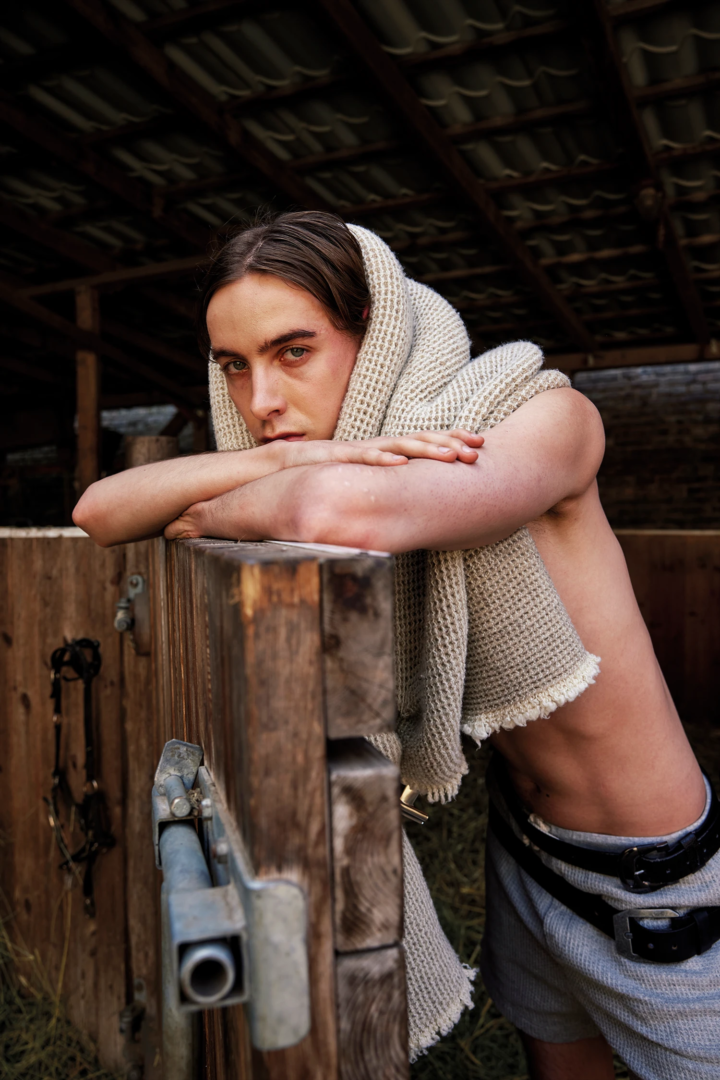
Back to Milano, the two orbits of the city
You can sense it in the air: a disillusionment with the entire fashion industry, which has become a financial rather than creative business. No more sophisticated codes, no longer a motor of ambition nor an example of patronage through advertising. Just a merely a numerical, algorithmic business. Gucci will rise again—the brand is too strong in the commercial collective imagination. The fashion system as a whole is experiencing a reputational slump, a perceived cheapening.
In Milan, there are two distinct orbits, two circles, expressing diametrically opposed attitudes, where different types of people gravitate. The first orbit could be epitomized here by Dolce & Gabbana and Dsquared2. In this orbit are those who want to shout, to show off how much money they can spend, how good their plastic surgeon is. Those who use whatever they want with no remorse. What problem could there be if they’re selling and making money? Those who still think people should dress up for a nightclub. Dolce & Gabbana, Cavalli—even Versace, and what a shame to see Versace had been disarmed. These are garments made of chemically extruded fibers, psychedelic prints, glitter wherever possible, anything to show how high the bust sits and how the buttocks sway to the beat. This is the world of the Italian trash: Alfonso Signorini, Barbara D’Urso, Fabrizio Corona, and Fedez. Names that are not know, luckily for us, out of the country. This orbit—these people – demeans Italian culture and Milan’s culture.
The other orbit shapes Milan’s identity: a city that works, whose snobbishness is just a form of understatement. Its taste evolves around the legacies of Gardella, Magistretti, Studio BBPR— the Italian architects and design masters. It’s a city where fashion was invented as ready-to-wear. This ethos is so deeply rooted in this region, all the way back to Federico Borromeo, in the Seventeenth century. Those who belong to this orbit remain silent while the others make noise, screaming as though in infernal circles.
The Pathos of Fendi
Pathos rises at Fendi. A show that everyone understood, even those reluctant to delve into details. A show able to present a new design, not just styling, built upon a hundred years of heritage. A family story that powers the brand, from the matriarchy passed down through generations, all the way to two young twins opening the door to tomorrow. It had all the sobriety, consistency, and generosity that fashion needs in these times.
In these late February days, to announce the show, Fendi has empowered historic bookstores in town: Libreria Bocca in the Galleria Vittorio Emanuele, an intellectual corner amid million-euro rents; Libreria Hoepli, taking over an entire display window and revealing the aged wooden floorboards. The newsstand in Largo Treves, owned by Fabrizio Prestinari—when he talks, he discerns your personality from the magazines you like to browse. Likewise at the ADI Museum and the Civic totems near the Darsena—Fendi roamed the city of Milan and its cultural strongholds to mark the 100th anniversary.
Writing about fashion: articles, journalists. Technical connotation and poetic connotation
Writing about fashion: writing by overusing adjectives and personal style opinions; describing a bit of tailoring with a few technical terms, just to appear knowledgeable; transcribing historical notes and reworking a quip so as to disguise gossip as news. Such are the articles that appear in most newspapers or blogs, both Italian and international, signed by journalists who get excited when they greet a famous figure, when they have to support someone, they call a friend, basking in the feeling that they belong to an elite.
Here at Lampoon, adjectives are forbidden. Writing about fashion, I keep trying. Writing by squeezing, scraping the brain, searching for levels of reading that might arouse the curiosity of those who say I couldn’t care less about fashion. Fashion, in its technical connotation, is the codification of products that increase sales in the markets.

